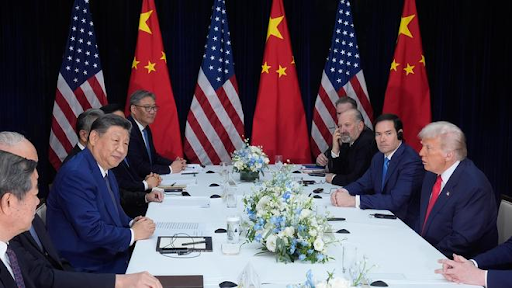



South Asia remains one of the world's least economically integrated regions, with intra-regional trade at a fraction of its potential. High trade costs, political disputes, and trust deficits cripple agreements like SAFTA. Overcoming these hurdles is crucial for unlocking the region's immense economic capacity and ensuring stability and prosperity.

Copyright infringement not intended
Picture Courtesy: THE HINDU
Political conflicts and high trade costs severely limit economic cooperation and growth in South Asia.
Low Intra-regional Trade => Trade among South Asian countries, under the South Asian Free Trade Area (SAFTA), accounts for a mere 5% to 7% of their total international trade. This figure is low in comparison to other trading blocs like the European Union (EU) at approximately 45%, and the former North American Free Trade Agreement (NAFTA) at around 25%.
Unrealized Trade Potential => The current intra-regional trade among SAARC nations stands at about $23 billion, significantly below the estimated potential of $67 billion. A study by the United Nations Economic and Social Commission for Asia and the Pacific (UNESCAP) suggests that the region's trade potential could have been as high as $172 billion by 2020, indicating that over 86% of this capacity is unexploited.
High Trade Costs => It is often more expensive for South Asian countries to trade with each other than with distant nations. The cost of trading within South Asia is about 114% of the value of the goods being exported. For example, it is about 20% more costly for India to trade with Pakistan than with Brazil, a country 22 times farther away.
Trust Deficit and Political Conflicts => Deep-seated political tensions, border disputes, and a general lack of trust among nations are major impediments.
Lack of Political Will => The low level of regional trade highlights a shortcoming in strategic policies aimed at promoting economic cooperation.
Non-Tariff Barriers => Beyond tariffs, a host of non-tariff barriers (NTBs), including complex regulations, and a lack of harmonized standards, increase the cost and time of trade.
Poor Infrastructure => Inadequate transport and logistics infrastructure presents a significant obstacle to the smooth flow of goods and services across borders.
|
A lack of economic opportunities can fuel social unrest and create fertile ground for extremism. Regional conflicts and terrorism disrupt trade routes, deter investment, and create an environment of economic uncertainty. |
Progress can be made through smaller, more agile sub-regional groups like the Bay of Bengal Initiative for Multi-Sectoral Technical and Economic Cooperation (BIMSTEC) and the Bangladesh, Bhutan, India, Nepal (BBIN) Initiative.
Reducing both tariff and non-tariff barriers is crucial, simplifying customs procedures, harmonizing standards, and improving transparency.
Investing in cross-border infrastructure, such as roads, railways, and energy grids, are essential to reduce trade costs and promote regional value chains.
Source:
|
PRACTICE QUESTION Q. Discuss the role of the South Asian Free Trade Area (SAFTA) in the context of South Asia's economic integration. Why has it failed to achieve its potential, and what are the specific barriers hindering its effectiveness? 250 words |




© 2026 iasgyan. All right reserved